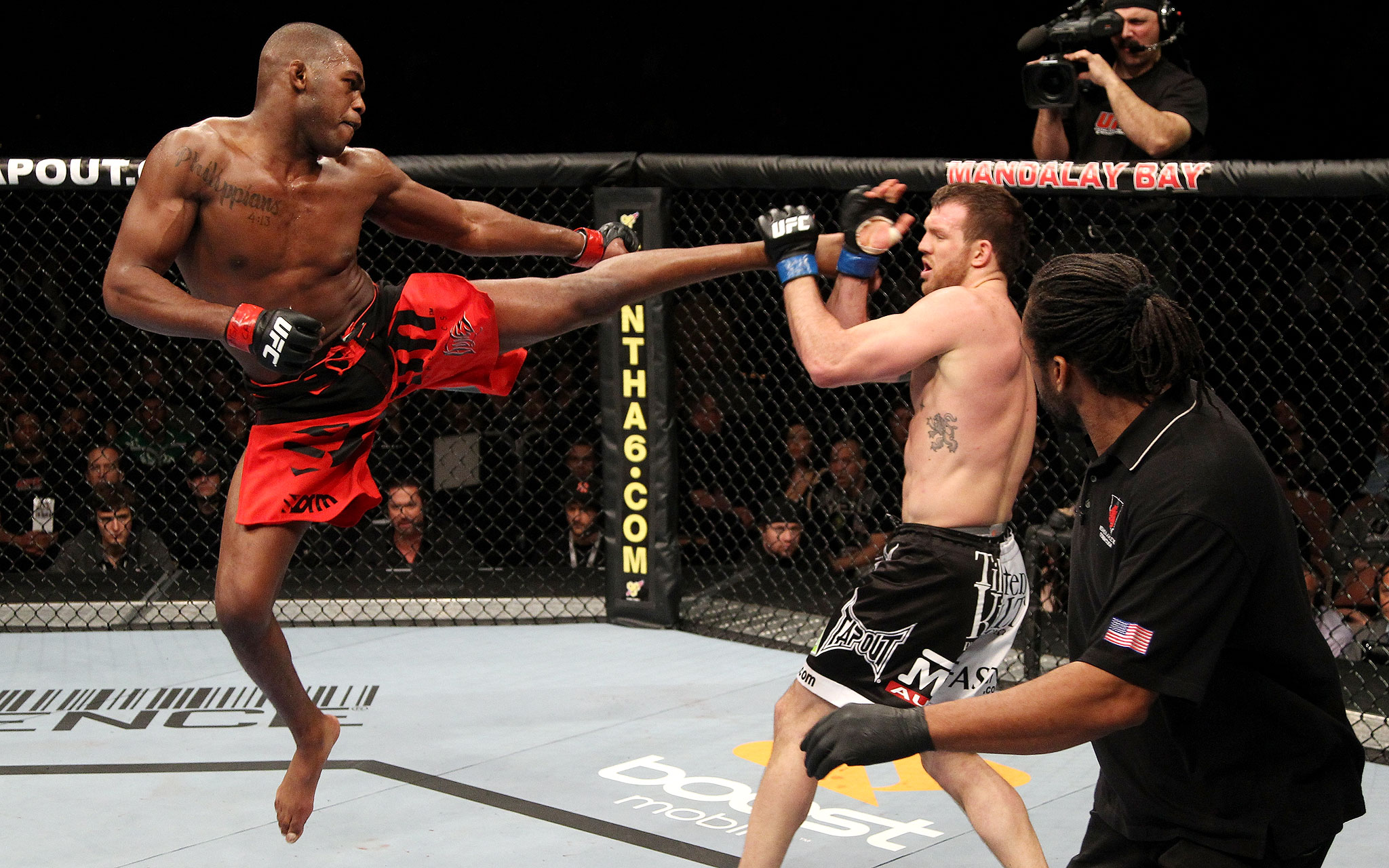What you MUST know about MMA

Training process
When training for an MMA fight, a fighter has to focus on a number of factors. The obvious concerns are speed, stamina, strength, power, agility, and flexibility. Another important point to consider is the fact that most fighters are put on a strict diet during their intense training. Speed, stamina and agility will keep the fighter on his toes, allowing him to dodge an opponent’s attacks, perform successful counterattacks and maintain enough energy to withstand the fight, while also storing energy to make sure he doesn’t lose due to exhaustion. Strength, power and flexibility are what the fighter will need to work on to improve his punching and kicking force, while flexibility will also make it possible to maneuver around an opponent who is trying to submit him. Strength is also key among mixed martial arts fighter basics, as it means a fighter will not get thrown down easily when wrestling with an opponent.
Train hard for 6 weeks or so then take a week off. Stick to the basics in the gym. Sure the dumbbells and cables are useful and can cut you up, but the 4 exercises above are bar none the best for adding solid mass to your structure.
Aerobics – Lots of people think cardio is for sissies and associate it with ballet or skinny men walking around in tights but doing aerobics before your lifts will actually pump your muscles up and allow them to work more efficiently without prematurely fatiguing. 20 minutes is all it should take before you hit the weights. Plus in the middle of an intense MMA Fight you’ll some some cardio conditioning to get you through.
Gear:
Shorts. To some, fight shorts looks like regular board shorts, but with a closer look you’ll realize that it ties up much better than regular shorts and that some shorts have slits on the sides for better move ability.
Rash Guard. There is no need for an expensive, fancy rash guard. A rash guard is really a tight fitting moisture resistant type of shirt that is worn to prevent various skin infections and bad odors while practicing or throughout competitions.
The clinch is an integral aspect of any MMA fighter’s arsenal. Since both sides will be doing their best to gain an advantage over the other, it becomes important to utilize a clinch. A clinch is basically like a grappling hold. This means one is trying to gain advantage over the other by pressing into the clinch hold, and usually one will get the dominant position. The clinch category also covers takedowns and throws, which are used as alternatives to the general combat moves utilized in stand-up fighting. Learning various types of wrestling is the best way to master clinching.
With HIIT you alternate high intensity work with recovery breaks. Recovery time periods range from half of the time you spent working to a 1:1 ratio. When training for MMA a lot of fighters use a 60 second rest period to get their body used to that recovery time that you have between rounds. The point is that you are always giving as much as you can while you train; think about it, in a match you do not need to be able to give 60% for 15 minutes. You simply want to be as close to 100% as you can.





